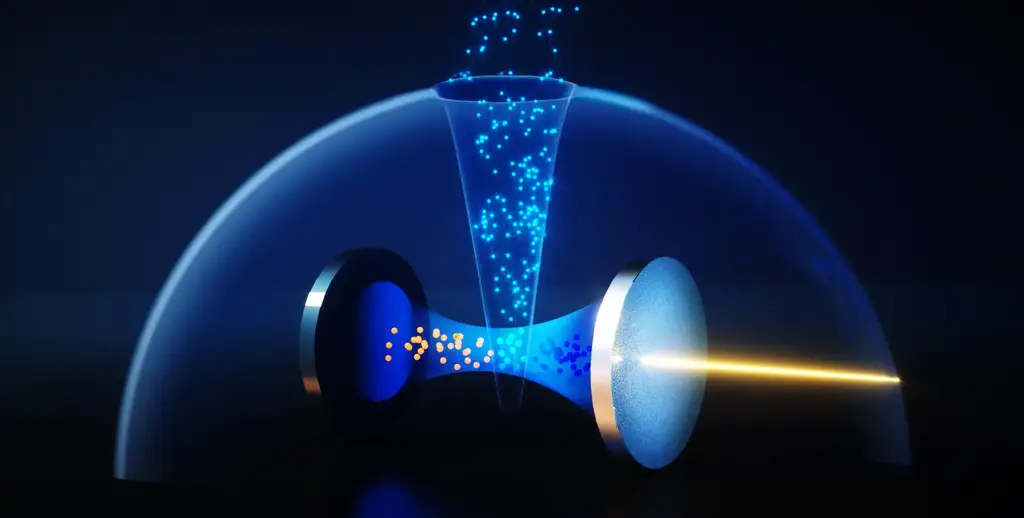Researchers at the California Institute of Technology have discovered a new phenomenon called “collectively induced transparency” (CIT), in which light passes unhindered through groups of atoms at certain frequencies. This discovery could potentially improve quantum memory systems. A recently discovered phenomenon called “collectively induced transparency” (CIT) causes groups of atoms to suddenly stop reflecting light at certain frequencies.
CIT was discovered by trapping ytterbium atoms in an optical cavity (essentially a small box for light) and blasting them with a laser. Although the laser light will reflect off the atoms up to a certain point, when the frequency of the light is adjusted, a window of transparency appears, through which the light passes unhindered through the gap.
“We never knew this window of transparency existed,” says Andrew Faraon (BS ’04) of Caltech, the William L. Valentine Professor of Applied Physics and Electrical Engineering and co-author of a paper on discovery published April 26 in the journal Science. Nature . “Our research was primarily a journey to find out why.”
Analysis of the transparency window shows that it is the result of interactions in space between groups of atoms and light. This phenomenon is similar to destructive interference, where waves from two or more sources can cancel each other out. Groups of atoms continuously absorb and re-emit light, often resulting in reflection of laser light. However, at the CIT frequency there is a balance created by the light re-emitted from each of the atoms in the group, resulting in a decrease in reflection.
“An assemblage of atoms strongly coupled to the same optical field can lead to unexpected results,” says co-author Mi Lei, a graduate student at Caltech.
The optical cavity, which is only 20 microns long and contains elements smaller than 1 micron, was made at the Kavli Institute for Nanoscience at the Cal Institute of Technology.
“Using traditional quantum optical measurement techniques, we found that our system had reached an unexplored regime and revealed new physics,” says graduate student Rikuto Fukumori, one of the paper’s lead authors.
In addition to the transparency phenomenon, the researchers also observed that a collection of atoms can absorb and emit laser light much faster or much slower than a single atom, depending on the laser’s intensity. These processes, called superradiation and subradiation, and their underlying physics are still poorly understood due to the large number of interacting quantum particles.
“We were able to monitor and control the quantum mechanical interactions of light and matter at the nanoscale,” says co-author Junhee Choi, a former Caltech postdoctoral fellow who is now an associate professor at Stanford University.
While the research is fundamental first and broadens our understanding of the mysterious world of quantum effects, the discovery has the potential to one day help pave the way for more efficient quantum memory, in which information is stored in a collection of tightly connected atoms. Pharaon also tried to create a quantum storage device by manipulating the interaction of several vanadium atoms.
“These experimental systems provide important insights into the development of future connections between quantum computers, beyond memory,” said Manuel Endres, professor of physics and Rosenberg researcher, who co-authored the study.
Source: Port Altele
